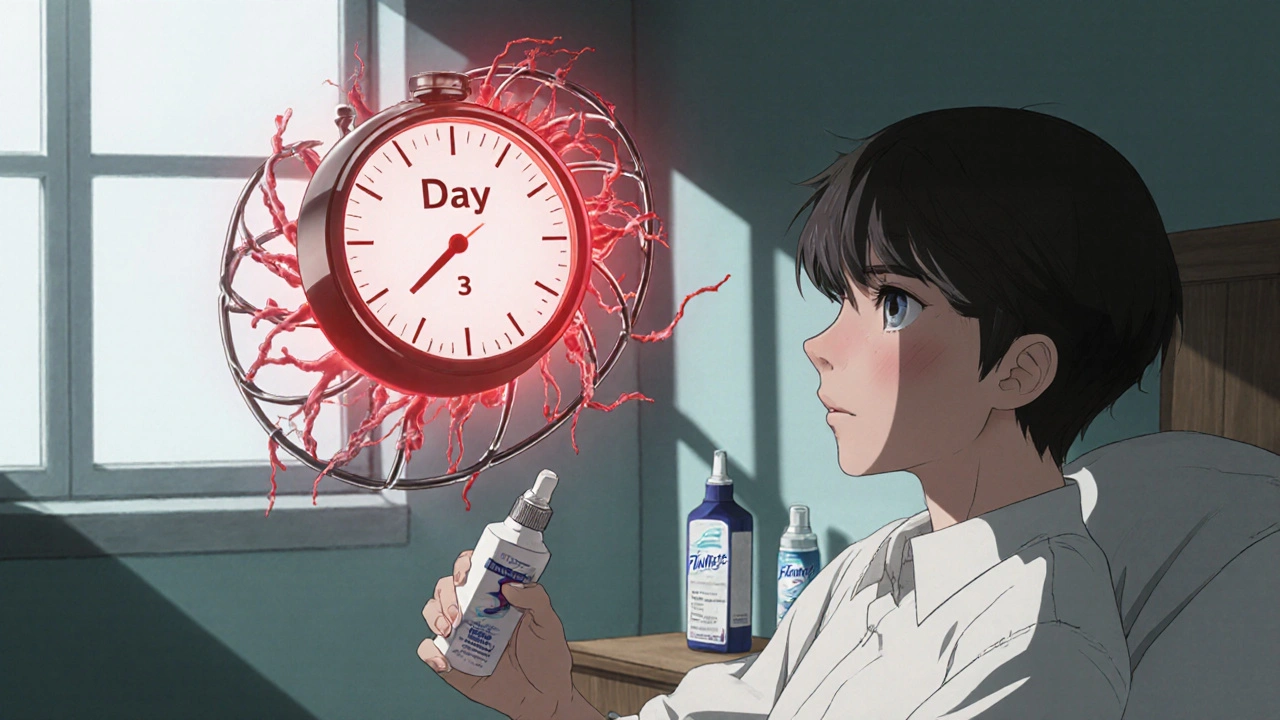OTC Nasal Sprays: What Works, What to Avoid, and How to Use Them Safely
When you’re stuffed up, an OTC nasal spray, a non-prescription medication applied directly to the nasal passages to relieve congestion or irritation. Also known as nasal decongestant sprays, it offers quick relief—but only if used the right way. Many people reach for these sprays without realizing they’re a double-edged sword. The most common types are decongestants like oxymetazoline and phenylephrine, which shrink swollen blood vessels to open your nose. But use them for more than three days, and your body fights back—leading to rebound congestion, a condition where nasal passages become more swollen after stopping the spray, making you dependent on it to breathe. It’s not addiction in the drug sense, but your nose literally forgets how to function without the chemical crutch.
Not all nasal sprays are the same. saline nasal spray, a saltwater solution that moistens dry nasal passages and flushes out irritants without chemicals. Also known as saltwater nasal rinse, it is safe for daily use, even for kids and pregnant women. It won’t zap congestion fast, but it cleans your nose, reduces inflammation, and doesn’t cause rebound effects. Then there are steroid sprays like fluticasone—often prescription, but some low-dose versions are now OTC. These reduce swelling over time and work best for allergies, not colds. Mixing them up is a common mistake. Using a decongestant spray for seasonal allergies? You’re treating the symptom, not the cause. And if you’re using it every day for weeks, you’re risking long-term damage to your nasal lining.
People don’t talk enough about what happens after the spray wears off. That stuffy feeling comes back worse, so you spray again. And again. Soon, you’re using it six times a day just to get through work. That’s not relief—that’s a cycle. Studies show nearly 1 in 5 long-term users of decongestant sprays develop chronic rhinitis from overuse. The fix? Stop cold turkey. It’s rough for the first 2–4 days, but your nose will reset. Use saline sprays, a humidifier, and steam to get through it. Some try oral decongestants like pseudoephedrine instead, but those raise blood pressure and aren’t safe for everyone. The real solution? Know what you’re holding. If your nose feels worse after stopping the spray, you’re not sick—you’re rebounding.
Below, you’ll find real cases and science-backed advice on how to use nasal sprays without trapping yourself in a cycle of dependency. We cover what ingredients to watch for, which sprays are truly safe for daily use, and how to break free if you’re already stuck. No fluff. Just what works—and what could be making your congestion worse.
OTC Nasal Sprays: How to Avoid Rebound Congestion and Use Them Safely
Learn how to safely use OTC nasal sprays without triggering rebound congestion. Discover the 3-day rule, safer alternatives like saline and steroid sprays, and how to break the cycle if you're already stuck.

